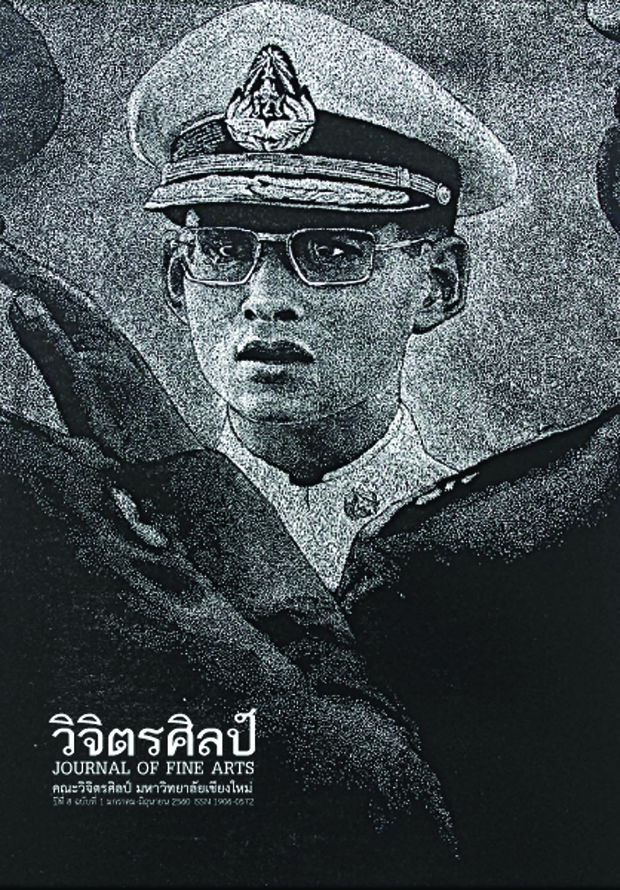วิเคราะห์ตำนานมูลศาสนาฉบับวัดสวนดอก
Main Article Content
Abstract
ตำนานมูลศาสนาเป็นวรรณกรรมพุทธศาสนาล้านนาที่สำคัญ ฉบับที่ใช้วิเคราะห์เป็นฉบับวัดสวนดอก แต่งโดยพระพุทธรักขิต และพระพุทธญาณ แต่งขึ้นระหว่าง พ.ศ. 1999 - 2053 ตั้งแต่สมัยพญาติโลกราช (พ.ศ. 1985-2080) ถึงพระเมืองแก้ว (พ.ศ. 2038-2068) อันเป็นช่วงเวลาที่สังคมล้านนาเกิดเหตุการณ์ความขัดแย้งระหว่างพระสงฆ์ฝ่ายวัดสวนดอกกับพระสงฆ์ฝ่ายวัดป่าแดง ผู้แต่งมีความสัมพันธ์กับพระสงฆ์ฝ่ายวัดป่าแดง เนื้อหาตำนานประกอบด้วย 2 ส่วน ส่วนแรกเกี่ยวกับพุทธประวัติ ส่วนที่สองเกี่ยวกับพระพุทธศาสนาในล้านนา จุดประสงค์ของผู้แต่งตำนานเพื่อเชื่อมวงศ์กษัตริย์ล้านนาเข้ากับวงศ์พระพุทธเจ้า เพื่อสรรเสริญพญาติโลกราชทั้งทางโลกและทางธรรม ทั้งเพื่อรับรองสถานะผู้แต่งที่เกี่ยวข้องกับนิการวัดป่าแดงว่าสืบสายมาจากพระสุมนเถระ ซึ่งเป็นปฐมสังฆวงศ์ของนิกายวัดสวนดอก และเพื่อให้ข้อคิดเกี่ยวกับเหตุการณ์ตามพุทธพยากรณ์ที่จะมาถึงใน พ.ศ. 2000 วิธีการแต่งตำนานมูลศาสนา เป็นความเรียงร้อยแก้ว เขียนด้วยภาษาไทยถิ่นเหนือ ใช้อักษรธรรมล้านนา จารบนใบลาน มีความยาว 10 ผูก มักขึ้นต้นเนื้อหาด้วยคำเช่นเดียวกับนิทาน สำหรับในส่วนที่ผู้แต่งต้องการอธิบายเพิ่มเติมมักใช้คำว่า “อธิบายว่า” แทรกทัศนะของนักปราชญ์ร่วมสมัย ยกธรรมะ นิทานพื้นบ้าน ชาดก สรุปเหตุการณ์ในภาพรวมก่อนอธิบายรายละเอียด และสรุปเหตุการณ์ไว้ท้ายเรื่อง เนื้อหาที่น่าสนใจในตำนานมูลศาสนา ได้แก่ การประดิษฐานพระบรมสารีริกธาตุในเมืองเชียงใหม่ และการผูกสีมาของวัดสวนดอก จำนวน 6 ครั้งด้วยกัน ได้แก่ สมัยพระสุมนเถร เจ้าอาวาสวัดสวนดอกลำดับที่ 1 (พ.ศ. 1912-1936) มหานันทปัญญา เจ้าอาวาสวัดสวนดอกลำดับที่ 3 (พ.ศ.1946-1961) มหาพุทธญาณ เจ้าอาวาสวัดสวนดอกลำดับที่ 4 (พ.ศ.1961-1963) มหาติปิฎก เจ้าอาวาสวัดสวนดอกลำดับที่ 7 (พ.ศ.1984- 1990) พระพุทธรักขิต เจ้าอาวาสวัดสวนดอกลำดับที่ 8 (พ.ศ.1990 – 2002) และมหานาคเสน เจ้าอาวาสวัดสวนดอกลำดับที่ 10 (พ.ศ.2018 – 2023)
Analysis of Tamnan munlasatsana (Suan Dok Temple Version)
Tamnan Mulasasana was the important Lanna Buddhist Literature in Thailand. This paper analyzed Tamnan Mulasasana of Suan Dok Temple Version that was written by Phra Buddharukkit and Phra Buddhayan. This Tamnan Mulasasana was written in 1999 B.E. and finished in 2053 B.E. It was composed during the reign of King Tilokarat (2080-1985 B.E.) to the Muang Kaew (2068-2038 B.E.). period, the conflict in Buddhim between Suan Dok Temple sect and Pa-Daeng Templein this sect. Author is associated with the Pa-Daeng temple. The content structure of Tamnan Mulasasana was divided into two main sections. The first section was about the life of Buddha and another one was the history of Buddhism in Lanna. The purposes of the authors are to combine Lanna’s king with Buddha; Gotama, to praise King Tilokarat, to show that the authors (Phra Buddha Rukkit and Phra Buddhayan) were decended from Phra Sumana Thera and also to give an idea of the Buddha prediction that happened in 2000 B.E. The characteristic of Tamnan Mulasasana is prose, written in Northern Thailand, on palm leaves, called Bailan, length 10 volumes. The beginning of story likes a tale and if the authors wanted to explain more, they used the word “explain about….,” and also gave the idea of philosophers, dharma, folktale and Jataka. The authors summarized the whole story, then explained that story, and summarized timeline at the end. The stories that used to be remarkable established the Lord Buddha’s relics in Lanna. Another remark was established on stone boundary or sema of Suan Dok Temple. Number six times, including with Thera Sumon, the abbot of Wat Suan Dok No. 1 (1912-1936 BC), Maha Nattapanya, No. 3 (AD 1946-1961), Maha Buddhayan, No. 4 (BE 1961-1963), Maha Tripitaka, No. 7 (BE 1984- 1990), Phra Buddharukkit, No. 8 (AD 1990-2002), and Maha Nakasean, No. 10 (AD 2018-2023).

